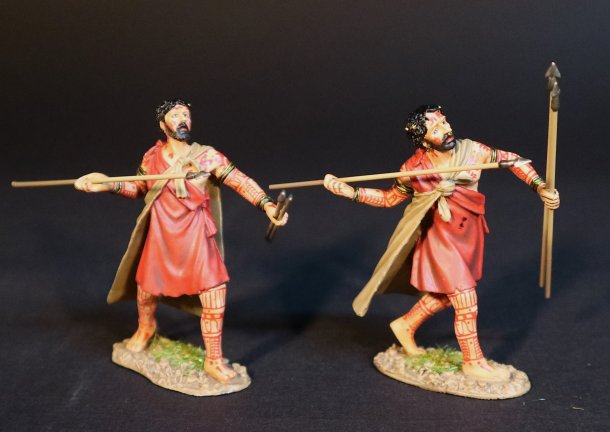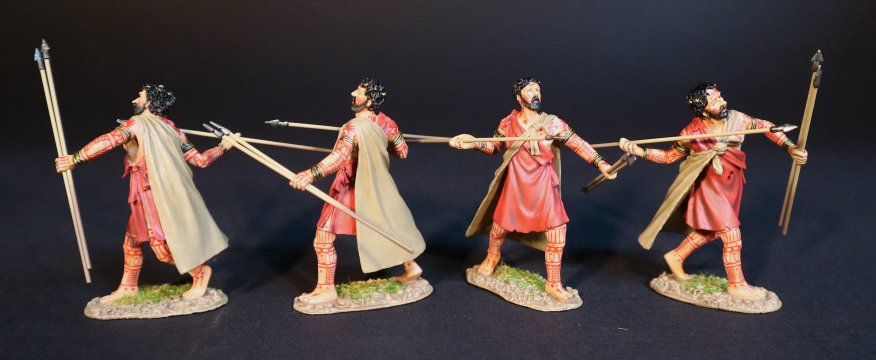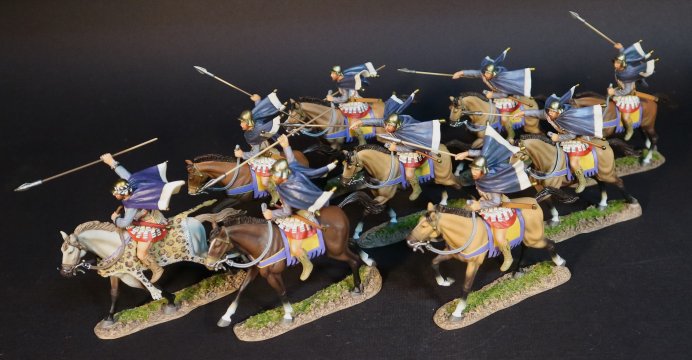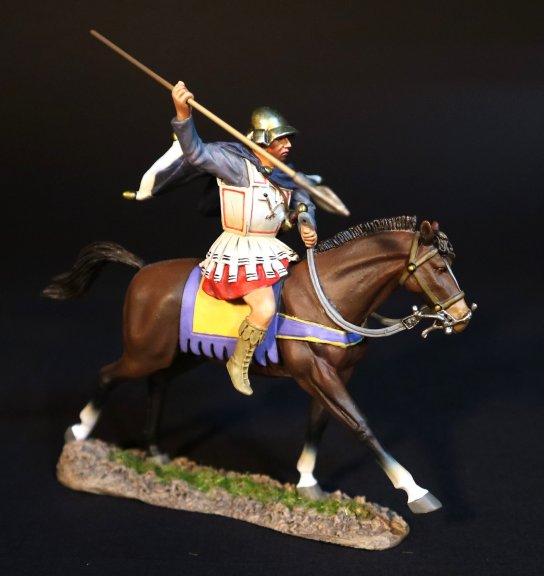- Joined
- Feb 2, 2011
- Messages
- 2,386
NEW RELEASES FOR APRIL 2024
THE ANCIENTS
NEW KINGDOM EGYPTIANS
The New Kingdom, is the period in ancient Egyptian history between the sixteenth century BC and the eleventh century BC. It was Egypt’s most prosperous time and marked the peak of its power.
It is also known as the “Ramesside period”, named after the eleven pharaohs who took the name Ramesses, after Ramesses I, the founder of the nineteenth Dynasty.

Ancient Egyptian chariots, emblematic of the power and prestige of the New Kingdom period (c. 1550-1070 BCE), were an integral part of the military and cultural fabric of the time.
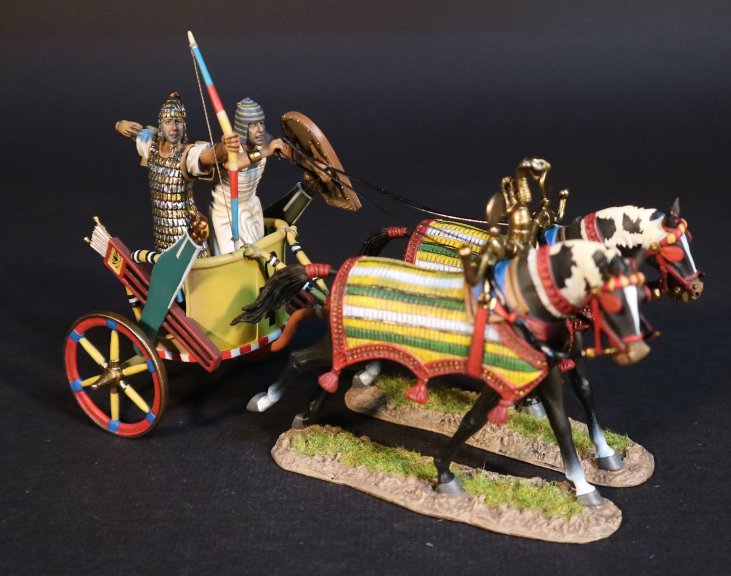
NKE-02
THE ANCIENTS,
NEW KINGDOM EGYPTIANS,
THE BATTLE OF KADESH 1274BC,
EGYPTIAN WAR CHARIOT.
These fast-moving, lightweight vehicles revolutionized warfare, enabling pharaohs to project their might and influence over vast territories.
The development of chariots began in the Near East around 3000 BCE, with the earliest known examples originating from Sumer in Mesopotamia.
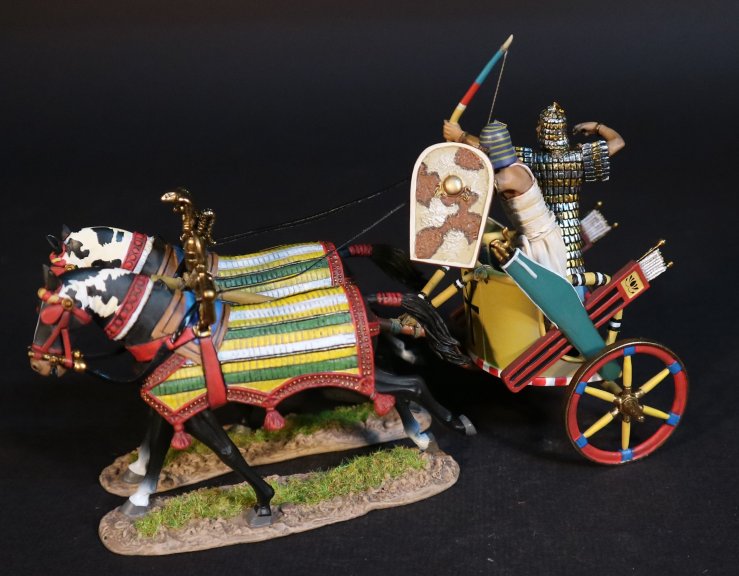
The introduction of chariots to Egypt occurred during the Second Intermediate Period (c. 1650-1550 BCE), a time marked by the decline of the Middle Kingdom and the fragmentation of Egyptian power.
During this period, the Hyksos, a Semitic-speaking people from Western Asia, migrated to and settled in the Nile Delta.
They eventually established their rule over the northern part of Egypt, creating the 15th Dynasty.
The Hyksos brought with them advanced technology and innovations, including the horse-drawn chariot and the composite bow.
These technological advancements provided them with a significant military edge, enabling them to maintain control over their newly acquired territories.
As they assimilated into the local culture, they also introduced these innovations to the Egyptian population.
The Egyptian elite adopted the chariot as a symbol of power, prestige, and divine favor.
Under the reign of Ahmose I (c. 1539-1514 BCE), the founder of the 18th Dynasty and the New Kingdom, the Egyptians successfully drove the Hyksos out of Egypt.
This victory was partly due to their effective use of chariots, which allowed them to match and surpass the Hyksos in battle.
In the New Kingdom, the Egyptian chariots were further refined and optimized for their specific needs.
They became lighter, faster, and more maneuverable, with a design that prioritized the use of archers in battle.
They were typically made from wood, with some parts fashioned from leather and bronze.
The yoke and harness system connected the chariot to the horses. The yoke was a wooden crossbar placed across the necks of the horses, with a central pole extending from it to the chariot.
The overall design of ancient Egyptian chariots made them highly efficient and agile vehicles that revolutionized warfare in the region.
In battle, chariots were primarily employed for offensive purposes, functioning as mobile archery platforms, and were also used for pursuing fleeing enemies, ensuring a decisive victory.
The golden age of the Egyptian chariot coincided with the New Kingdom (c. 1550-1070 BCE), a period marked by the resurgence of Egyptian power and the expansion of its empire.
These versatile vehicles enabled Egypt's New Kingdom pharaohs to project their power across vast territories and solidify their status as rulers of a mighty empire.
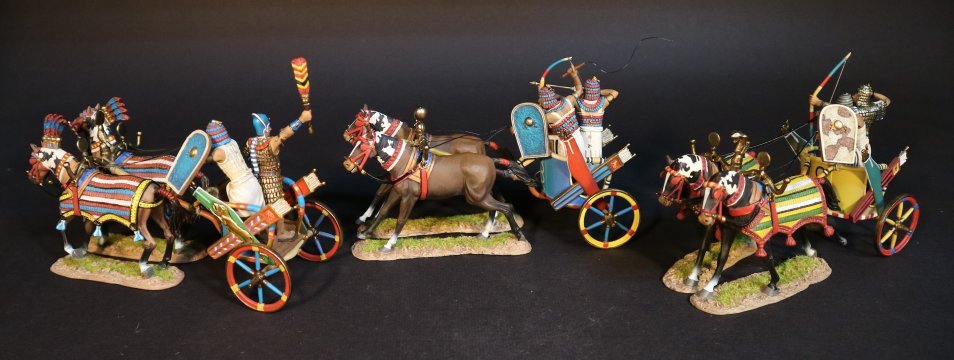
Today, the chariot remains an enduring symbol of ancient Egypt's military prowess and cultural sophistication.
The Battle of Kadesh took place between Ramesses II, Egyptian Empire and the Hittite Empire led by Muwatalli II, in what is believed to be around May 1274 BC.
The battle took place at the Orontes River, just upstream of Lake Homs and near the archaeological site of Kadesh, along what is today the Lebanon-Syria border.
It is the earliest pitched battle in recorded history for which details of tactics and formations are known, and is believed to be the largest chariot involved battle ever fought. It is believed there were between 5,000 to 6,000 chariots involved in total.
In the critical moment of the battle, Ramesses and his body guard were surrounded, and he broke out by personally leading several charges into the Hittite ranks.
ARMIES AND ENEMIES OF ANCIENT ROME
THE CARTHAGINIANS
THE BATTLE OF ZAMA 202BC
Carthage learnt the use of elephants from fighting in Sicily against Pyrrhus of Epirus between 278 and 276 BC.
The Carthaginians quickly realized they could easily acquire African Forest Elephants which inhabited North Africa in great numbers. It was much easier to capture these elephants than import elephants from India.
It was not long before Carthage had the most powerful elephant corps in the Mediterranean world, with stables housing up to 300 elephants located in the capital. They would replace chariots as the Carthaginian’s main striking force.
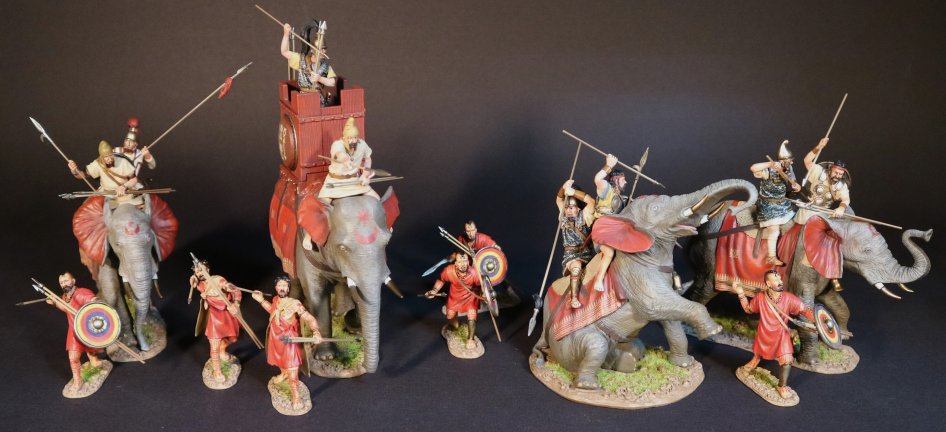
The elephants primarily used by the Carthaginian armies were of the now extinct smaller African kind.
They stood between 2m and 2.5m tall.
These elephants were taken from the now long vanished forests of Numidia. Their primary use was to terrify the uninitiated man and horse, and they carried a single rider known as a mahout, who was armed with a javelin. Each elephant could also carry an additional soldier armed with javelins or a long spear.
It is believed that the elephants deployed at Zama did not carry infantry in howdahs on their backs.
Most scholars doubt it as the forest species being smaller than Asian elephants, it is believed could not carry the additional weight. Any elephants with towers were believed to have been imported from India.
However the Egyptian Ptolemies as well as Numidian kings are recorded as having put towers on forest elephants, and the Roman poet Juvenal mentions towers on Hannibal’s elephants.
NORTH AFRICAN ALLIES
Although initially the Carthaginian army was composed only of Citizens of Phoenician origin, it saw increased recruitment of contingents of mercenaries and allies a necessity in order to realize the policy of imperial expansion.
This use of mercenaries saved the metropolitan population from heavy casualties that were not easily replaceable, and it also reflected the Carthaginian concept of war, which was considered simply as an extension of business.
With the enlargement of Punic economic interests the army became more exclusively mercenary and progressively came to include almost all the peoples of the central and western Mediterranean area.
The largest single component of the Punic army usually comprised soldiers recruited or impressed from subject Libyans. These are often referred to as “Africans”, or Liby-Phoenicians. These were mercenaries or in some cases conscripts, subject to service from the tenants of the large African estates.
Eventually these mercenaries were no longer simply troops hired for a single campaign and discharged after a few months service, as had originally been the case, especially during the first Punic War. They were now a professional standing army seasoned by long years of warfare, under the command of skilled generals such as Hamilcar Barca and his sons.
Among the North African allies were the subjected Libyans of the Marmarica, which formed a major part of the light infantry. These were mainly made up from several tribes, Nasamones, Macae from the Cynips river, the tribes of Barce, the Autololes, the ferocious Adyrmachidae, and the Garamantians.
THE ANCIENTS
NEW KINGDOM EGYPTIANS
The New Kingdom, is the period in ancient Egyptian history between the sixteenth century BC and the eleventh century BC. It was Egypt’s most prosperous time and marked the peak of its power.
It is also known as the “Ramesside period”, named after the eleven pharaohs who took the name Ramesses, after Ramesses I, the founder of the nineteenth Dynasty.

Ancient Egyptian chariots, emblematic of the power and prestige of the New Kingdom period (c. 1550-1070 BCE), were an integral part of the military and cultural fabric of the time.

NKE-02
THE ANCIENTS,
NEW KINGDOM EGYPTIANS,
THE BATTLE OF KADESH 1274BC,
EGYPTIAN WAR CHARIOT.
These fast-moving, lightweight vehicles revolutionized warfare, enabling pharaohs to project their might and influence over vast territories.
The development of chariots began in the Near East around 3000 BCE, with the earliest known examples originating from Sumer in Mesopotamia.

The introduction of chariots to Egypt occurred during the Second Intermediate Period (c. 1650-1550 BCE), a time marked by the decline of the Middle Kingdom and the fragmentation of Egyptian power.
During this period, the Hyksos, a Semitic-speaking people from Western Asia, migrated to and settled in the Nile Delta.
They eventually established their rule over the northern part of Egypt, creating the 15th Dynasty.
The Hyksos brought with them advanced technology and innovations, including the horse-drawn chariot and the composite bow.
These technological advancements provided them with a significant military edge, enabling them to maintain control over their newly acquired territories.
As they assimilated into the local culture, they also introduced these innovations to the Egyptian population.
The Egyptian elite adopted the chariot as a symbol of power, prestige, and divine favor.
Under the reign of Ahmose I (c. 1539-1514 BCE), the founder of the 18th Dynasty and the New Kingdom, the Egyptians successfully drove the Hyksos out of Egypt.
This victory was partly due to their effective use of chariots, which allowed them to match and surpass the Hyksos in battle.
In the New Kingdom, the Egyptian chariots were further refined and optimized for their specific needs.
They became lighter, faster, and more maneuverable, with a design that prioritized the use of archers in battle.
They were typically made from wood, with some parts fashioned from leather and bronze.
The yoke and harness system connected the chariot to the horses. The yoke was a wooden crossbar placed across the necks of the horses, with a central pole extending from it to the chariot.
The overall design of ancient Egyptian chariots made them highly efficient and agile vehicles that revolutionized warfare in the region.
In battle, chariots were primarily employed for offensive purposes, functioning as mobile archery platforms, and were also used for pursuing fleeing enemies, ensuring a decisive victory.
The golden age of the Egyptian chariot coincided with the New Kingdom (c. 1550-1070 BCE), a period marked by the resurgence of Egyptian power and the expansion of its empire.
These versatile vehicles enabled Egypt's New Kingdom pharaohs to project their power across vast territories and solidify their status as rulers of a mighty empire.

Today, the chariot remains an enduring symbol of ancient Egypt's military prowess and cultural sophistication.
The Battle of Kadesh took place between Ramesses II, Egyptian Empire and the Hittite Empire led by Muwatalli II, in what is believed to be around May 1274 BC.
The battle took place at the Orontes River, just upstream of Lake Homs and near the archaeological site of Kadesh, along what is today the Lebanon-Syria border.
It is the earliest pitched battle in recorded history for which details of tactics and formations are known, and is believed to be the largest chariot involved battle ever fought. It is believed there were between 5,000 to 6,000 chariots involved in total.
In the critical moment of the battle, Ramesses and his body guard were surrounded, and he broke out by personally leading several charges into the Hittite ranks.
ARMIES AND ENEMIES OF ANCIENT ROME
THE CARTHAGINIANS
THE BATTLE OF ZAMA 202BC
Carthage learnt the use of elephants from fighting in Sicily against Pyrrhus of Epirus between 278 and 276 BC.
The Carthaginians quickly realized they could easily acquire African Forest Elephants which inhabited North Africa in great numbers. It was much easier to capture these elephants than import elephants from India.
It was not long before Carthage had the most powerful elephant corps in the Mediterranean world, with stables housing up to 300 elephants located in the capital. They would replace chariots as the Carthaginian’s main striking force.

The elephants primarily used by the Carthaginian armies were of the now extinct smaller African kind.
They stood between 2m and 2.5m tall.
These elephants were taken from the now long vanished forests of Numidia. Their primary use was to terrify the uninitiated man and horse, and they carried a single rider known as a mahout, who was armed with a javelin. Each elephant could also carry an additional soldier armed with javelins or a long spear.
It is believed that the elephants deployed at Zama did not carry infantry in howdahs on their backs.
Most scholars doubt it as the forest species being smaller than Asian elephants, it is believed could not carry the additional weight. Any elephants with towers were believed to have been imported from India.
However the Egyptian Ptolemies as well as Numidian kings are recorded as having put towers on forest elephants, and the Roman poet Juvenal mentions towers on Hannibal’s elephants.
NORTH AFRICAN ALLIES
Although initially the Carthaginian army was composed only of Citizens of Phoenician origin, it saw increased recruitment of contingents of mercenaries and allies a necessity in order to realize the policy of imperial expansion.
This use of mercenaries saved the metropolitan population from heavy casualties that were not easily replaceable, and it also reflected the Carthaginian concept of war, which was considered simply as an extension of business.
With the enlargement of Punic economic interests the army became more exclusively mercenary and progressively came to include almost all the peoples of the central and western Mediterranean area.
The largest single component of the Punic army usually comprised soldiers recruited or impressed from subject Libyans. These are often referred to as “Africans”, or Liby-Phoenicians. These were mercenaries or in some cases conscripts, subject to service from the tenants of the large African estates.
Eventually these mercenaries were no longer simply troops hired for a single campaign and discharged after a few months service, as had originally been the case, especially during the first Punic War. They were now a professional standing army seasoned by long years of warfare, under the command of skilled generals such as Hamilcar Barca and his sons.
Among the North African allies were the subjected Libyans of the Marmarica, which formed a major part of the light infantry. These were mainly made up from several tribes, Nasamones, Macae from the Cynips river, the tribes of Barce, the Autololes, the ferocious Adyrmachidae, and the Garamantians.


